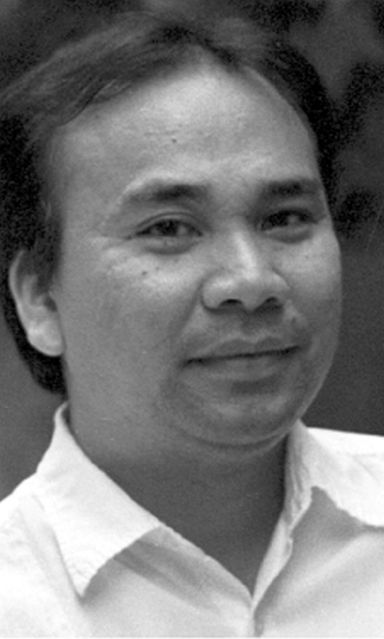
BERSALES
We all hate Adolf Hitler and his evil ambitions to rule Europe, but if there is one thing Germans will have to thank him for it was the increase in the number of autobahns of expressways during his evil reign.
True, there are many who debunk his contributions to construct long stretches of highways with speed limits of 120 kilometers per hour but it cannot be denied that he did use his dictatorial reign to build about 3,800 kilometers that still survive to this day.
Comes now the announcement from the Duterte administration that an expressway running the 40 kilometer stretch between Danao and Cebu cities and another near-equal number of kilometers thence to Naga will be built soon.
This is expected to cost 50 billion pesos and will cut travel time to a mere one hour from one end to the other (i.e., Naga to Danao or vice versa).
I believe a good chunk of money for this ambitious if not belated project (the previous, lethargic Aquino administration should have done this already) will be used for right-of-way payments to private lot owners.
Therein lies the rub. If one reads the biography of Eusebius J. Halsema, written by his son, James, and published in 1991 by New Day Pub.
(“E.J. Halsema: Colonial Engineer, 1875-1945”), you will learn that even before the United States developed its oh-so-efficient national highways system, the young Halsema and his fellow engineers at the fledgling Bureau of Public Works in Cebu, were already testing it via the Talisay-Toledo Road (what has come to be known as Manipis Road), completed during the first decade of the 20th century.
After this highway, came the Carcar-Barili South Road and the eastern side of the South Road as well as the North Road, which virtually linked all the towns of Cebu in different classes of road (from paved to macadam to mere dirt). And then all hell broke lose.
Given the tropical nature of the Philippines and the heat that is normally experienced in islands like Cebu with sea breezes pounding it on all sides, houses began to be built close if not immediately after these heretofore two-lane highways so that people can commute immediately.
Worse, with perennial lack of funds and because of the obvious need to link one town center to the other, both the so-called North and South roads of Cebu (as well as anywhere else in this American colony of ours) ran through the center of every town, usually passing by the town plaza and its complex of municipio, plaza, church and market.
Fast forward a hundred years later and we no longer recognize any semblance of a national highways system anywhere in the Philippines, except those developed by a private firm during the Aquino presidency one of which passed through the Aquino-owned Hacienda Luisita in Tarlac.
Obviously, you can no longer build eight-lane highways that run through the middle of town (with maximum allowable speeds of 120 kilometers per hour in the manner of German autobahns).
There are many ills that haunt this country and one of these is how our national highways ended up passing right through the middle of towns or cities. Politics and self-interests of politicians now long dead may have something to do with why we ended up with these supposed conveyances that later became avenues of gridlock right in the center of cities and towns where voters abound.
More to the point, however, is why the national leadership decades back never saw that population centers would impact on thoroughfares.
Or, given the tropical nature of this country, commuters do not like to walk long distances under the heat of the sun or under pelting rain to reach a road and, ergo, our fellow citizens build so close to any road thereby clogging it further. (Notice that it’s only when you see rice fields that you find houses so far away from the roads.
This scenario is a function of the rice paddy system where farmers have to be right in the center of their entire farm lot to be able to reach it in any direction, road or no road.)
And so, I really hope that when this 77-kilometer highway sees the light of day, it will not run through the center of towns and cities but link them through satellite roads, the way they should so that the term ‘expressway’ will have some real meaning when one has to travel from Danao to Naga without passing through traffic in the metropolises.
Also, so that no new settlements gather on the sides or exits of this expressway—which eventually form into a barangay and pretty soon into a town—a very wide buffer zone should be created all over the expressway in the manner of all other national highways in the world. Or else, in a hundred years, our future engineers will once again be spending billions to remove belligerent lot owners.
* * *
“Iro-e: The Beauty of Polychrome Imari, Late Edo to Late Showa (1780-1980),” an exhibition of nearly 150 pieces of Japanese Imari porcelains will open today at the Changing Exhibitions Gallery of the University of San Carlos Museum.
Curated by yours truly together with my assistant curators, Regina Yoma and Lyrech Uy Ibale, as well as our students assistants Reina Rañises and Josei Itable, the USC Museum Collection of fine pieces as well as those designed for ordinary, everyday use in Japan will be on exhibit together with those of Ferdinand Azacarraga and Radcliff Ray Estrada.
This exhibition, which runs until May 31, 2018, is part of the 50th Anniversary Celebrations of the museum and is open to the general public. I shall discuss Imari ware at 10:30 in the morning today as part of the opening ceremonies. For inquiries, please call the museum at the USC Downtown (former Main) Campus at Tel. 2531000 loc. 191.